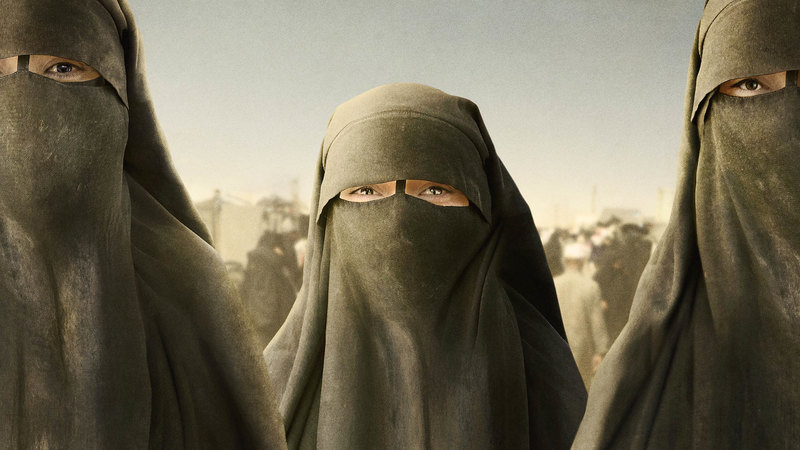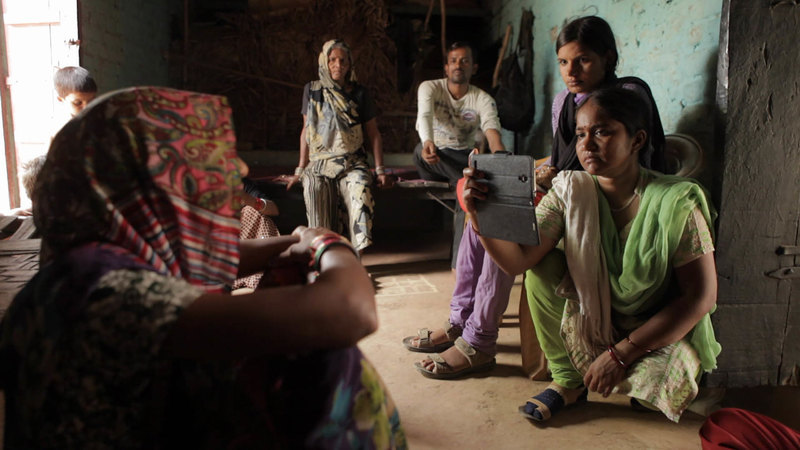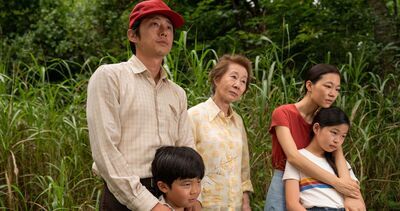Sundance 2021: Faya Dayi, Sabaya, Writing With Fire

One of the happy byproducts of Sundance’s digital incarnation is time. Space to first consider, more space to reconsider. On first blush, Jessica Beshir’s abstract anthropological directorial feature debut, “Faya Dayi,” left me underwhelmed. Bewildered. In a normal festival setting, short on time, and with other movies to see, I would have bitten the bullet and filed a quick review of my first assessment. But in a digital setting, with ample time to revisit, I experienced the rare pleasure of watching a festival selection for a second time during the festival itself. On my second watch, Beshir’s gorgeous freeform black and white picture revealed itself as a poetic study of a country intoxicated into listlessness.
Set in Ethiopia, “Faya Dayi” concerns the populace’s dependence on the region’s biggest cash crop—a leafy green vegetation known as the khat plant. More than an added line to the country’s GDP, the khat plant is a powerfully addictive drug wielded by the user to induce excitement or euphoria. While composing lyrical vignettes of the customers either lulled into ennui or roiled to violence, Beshir tracks the plant from harvest to marketplace, from field to dealer. And in the pirouetting hookah smoke, the sprinkles atop smushed food, and the slender branches fit to chew, she demonstrates how the drug is an all-encompassing fixation to her subjects’ daily lives. The adults, from mothers to fathers, warn their children against entering the khat’s gloomy cloud, even while they tap the leaves for their own consumption. For the younger clean generation, whom Beshir contrasts from their fantasizing stoned elders, the plant’s presence means less opportunities for school and love, and more reasons to leave Ethiopia.
Beshir eloquently maps Ethiopia’s realities, which includes a violent government further repressing its people, onto an ancient religious parable of the khat plant’s origin. Though “Faya Dayi” captures a tapestry of subjects, including the 14-year-old Mohammed, an errand boy with dreams of reuniting with his mother in Saudia Arabia, leaving his hot headed khat-addicted father behind, the film mystically weaves in and around several nameless individuals. Such an approach could easily leave one feeling cold, disconnected from the people onscreen. But the wet lo-fi soundscape over Beshir’s evocative monochromatic compositions, slow-motion sequences, and curious tactile framing of laced curtains and narrow stone pathways mirror the hazy high of a country left rudderless. It strikes us at our core. Beshir’s assured debut is a spellbinding documentation of a self-destructive walking dream with few signs of an ending.

Controlled by the US-backed Syrian Democratic forces, the Al-Hol refugee camp straddles the Syria-Iraq border. While the camp is purportedly filled with only Daesh (ISIS) women and children, intel says the population also includes kidnapped Yazidi women (a kurdish ethnic minority), forced by Daesh men into becoming a sabaya (sex slave). By way of infiltrators—free Yazidi women who have volunteered to pose as Daesh by adorning black niqabs—implanting themselves in the fenced-in city of white tents, the Yazidi Home Center receives crucial information needed to recover these women and deliver them back to their families. Hogir Hirori’s harrowing “Sabaya” is a riveting, though often meandering story, about a select few working to reunite the families torn apart by an endless civil war.
The risk that Mahmud and his volunteer comrades take, filing into a van to Al-Hol Camp with nothing but their sidearms and a couple of rifles, is obviously immense. Mahmud routinely receives cryptic voicemails and texts from his infiltrators updating him with new intel on the scattered sabaya who’ve watched their names, ages, and places of birth changed by their captors. Retaliatory force by Daesh against the Yazidi Home Center’s volunteers also constitutes a persistent danger for Mahmud. And in some instances, even while Hirori’s film crew rides along, they try to.
While Hirori’s documentation can be immersive, with one captivating shot finds the lens behind a niqab’s veil, viewers are occasionally trapped frustratingly at a distance. For the safety of the infiltrators, obviously, Hirori must exercise caution when illuminating their embedding process. But there’s also less of the survivors’ journey through PTSD symptoms in lieu of narrowing the scope to Mahmud’s emotional burden than one might expect. The day-to-day events are equally as elusive to track, giving the documentary a winding repetitive quality.
Nevertheless, each rescue that Mahmud and the Yazidi Home Center achieve, with the women varying in ages as young as seven, is a successive gut punch that renders the viewer distressed. And in the beguiling photography—a brushland horizon of fire and plumes—the image that’s captured is as seemingly endless as the Yazidi Home Center’s task. Hirori’s “Sabaya” is a harrowing portrait of courage under fire that will shake audiences into awareness solely based on its subject matter, yet the film’s overriding thesis, the trauma these women have experienced, feels far too elusive.

In India is another group of dauntless women. In the country’s restrictive caste system—divided into priests, warriors, traders, and labourers—Dalits (untouchables), especially Dalits women, constitute the lowest rung. Nevertheless, in 2002, in Uttar Pradesh, a small band of Dalits women founded Khabar Lahariya (meaning ‘Waves of News’)—the only Indian newspaper run solely by women. To adapt to the changing media landscape, these reporters, already doubted by their male peers and family members, are now switching from print journalism to digital. In “Writing With Fire,” co-directors Sushmit Ghosh and Rintu Thomas follow four Khabar Lahariya reporters—Meera, Kavita, Suneeta, and Shyamkali—in their journey as women journalists to deliver impactful stories while navigating India’s corrupt political system, its misogyny, and the nation’s stringent caste system.
Each of the four subjects, all Dalits, and part of a much larger newsroom, come from varying backgrounds. Meera, a persistent incisive reporter who holds a master’s in political science and a degree in teaching, juggles her family life while her and her childhood best friend Kavita document the fervent general election. Because Suneeta hails from a mining village she takes a special interest in the hazardous working conditions implemented by the mafia in their illegal mines. While Shyamkali greatly struggles with the transition from print to digital due to her less educated background, her spirit, nonetheless, is just as strong. All of these women, in their wit and determination to represent the powerless, are an ebullient tonic in the face of a cynical chauvinistic male power structure.
These crack journalists stand up to dismissive regressive politicians of the BJP party, turn down their husbands and fathers who ask them to stay home, and resist the pressures of marriage in a bid to reveal the inequities of a system that ignores their basic right to safety from rape and death. They’re easy to root for. Especially when Ghosh and Rintu’s montages show how the paper’s Youtube channel, with each report, grows in subscribers and views—even in the face of a vitriolic comments section. The admittedly abrupt and unsatisfying finish to “Writing With Fire” doesn’t tarnish these women’s efforts. Rather the resounding message that manages to boil to the surface, “nevertheless, she persisted,” hits with a pen point’s force.





